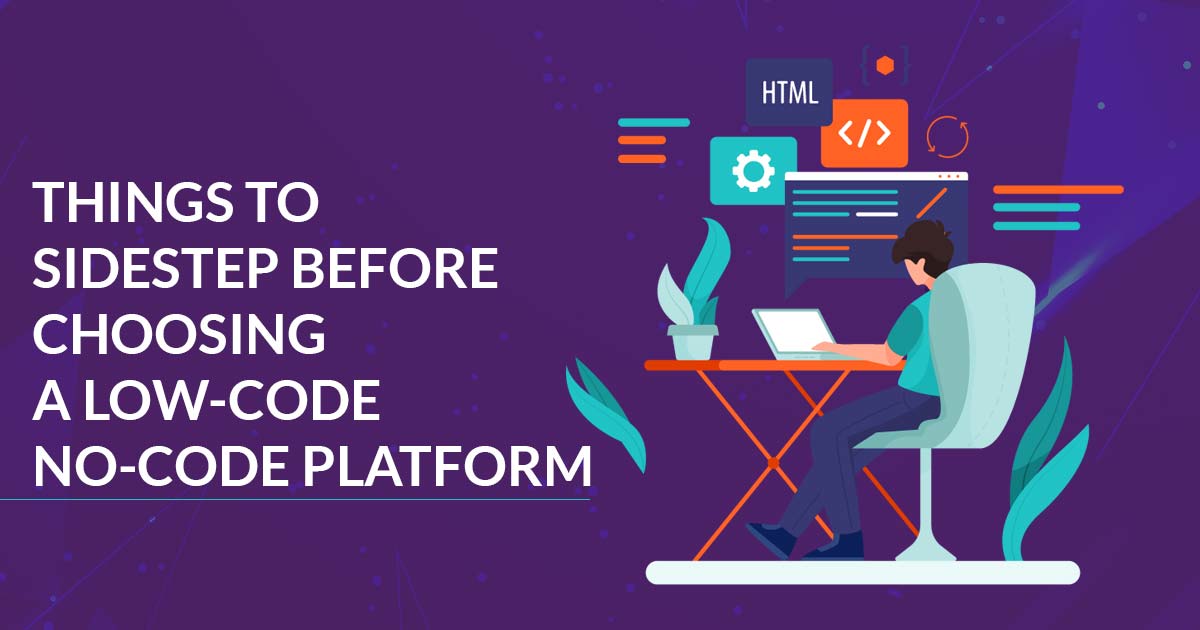
The past few years were like a learning curve for businesses around the world. They understood how unprepared they were for unforeseen situations and what they had to do next to be prepared for any such imminent situation.
They have learned the importance of digital agility and the role low-code platforms can play in it. In a pandemic situation, hospitals and banks used low-code no-code platforms very effectively, and apps built with low-code platforms enabled them to do things like manage appointments, streamline loan processing, share information, and more.
Now, as businesses look to their digital futures beyond the past and current situation, it seems that low-code application platforms, or LCAPs, can play an even bigger role.
Survey reports show that 85% of people believe that low-code will become common in the next few years for developing apps and software, and Forrester predicts that around 80% of enterprise software will be built with low-code technology in 2022-23.
There are many reasons to choose LCAP over traditional methods of app development, but when you are considering the LCAP method of app development, make sure you opt in for a solution that best suits your needs – and also avoid these five common mistakes when doing it.
Seller Lock-in Trap
Traditional LCAP seeks to be the ultimate stop for most of your software development needs. It defines programming as a visual, drag-and-drop interface. LCAP also makes it easy to develop all the tools you or your business needs to serve customers, assist employees, and extend your product offerings.
However, it is also a fact that over-dependence on your LCAP vendor could put you in a tough situation. Before making any serious move, make sure to find the answer of below questions:
- What if you want to migrate the application you build to another platform?
- What if you want to remove it from LCAP entirely?
If your vendor failed to provide a promising answer to either, then you are left with starting from scratch elsewhere.
Recommended: Myths and Reality on Low-Code No-Code Platforms
Boundary of Black-box Proprietary Code
Low-code technology is trending because it empowers citizen developers. Citizen developers are users with no to minor coding experience. LCAP reduces the need for manual coding, it also means that each and every app are having that manually coded part in them. Today or tomorrow you will need the help of an expert.
However, many LCAP providers make it difficult. If you are stuck with one such vendor, then improving integration or fixing bugs will become a headache as the vendor doesn’t let you manipulate their proprietary code. It means that you will always have to be up against that black box when you try to improve your own app.
Ownership Matters
LCAPs are vital for companies of all sizes, additionally, enterprises looking to automate some of their business processes can take advantage of ready-made decision-making modules. Whereas, startups building their own MVPs can develop their apps quickly and start collecting funding as soon as possible.
However, there are some pitfalls with low-code platforms that can affect particular businesses and their projects. Low-code vendors play hide & seek when it comes to who owns what and what access they will have when it comes to apps developed using their LCAPs platform.
This can cause significant issues for small enterprises they will have to share things that are completely their own.
Scalability But in Limit
Most LCAPs are perfect for building limited apps for limited problems, these may include simplifying customer relations, automating decision-making, and quickly filling gaps in your stack.
However, if you are planning to build a more customized project or if you need to scale an already build small LCAP app, you may encounter problems with multiple platforms.
Meanwhile, it is also important to know that there are many LCAP platforms that are not designed to accelerate as fast as you might need. Low-code tools may start to break, causing more problems than they were initially built to solve. This can create a big problem for your business where you have to deal with internal problems as well as users.
Boundary on Customization
It has been observed from time to time that low-code vendors have knowledge in some specific niches. Their LCAPs may target the size of the business, the industry of the business, and the goal of the app. While these solutions may seem ideal if they fit your needs, customizing them too much on platforms can be difficult if they don’t fit.
Also, if you need to customize an app you’ve already built and your vendor doesn’t support those changes, you may need to scrap your product and start from zero.
Low-code tools are bringing a revolution in the development field. Whether you want to create a website or app for mobile, desktop, cloud, or server, low code can help you easily. These platforms allow users without expert-level knowledge to create apps but for advanced features or customizations, experts will be required.
Above we provided details of some common mistakes and also tried to help you so you can deal with the situation better and choose the best low-code platform for your project. The SDMT LCAP and LCNC platform is primarily built with Java, Angular, IDE, framework, and developer tools.